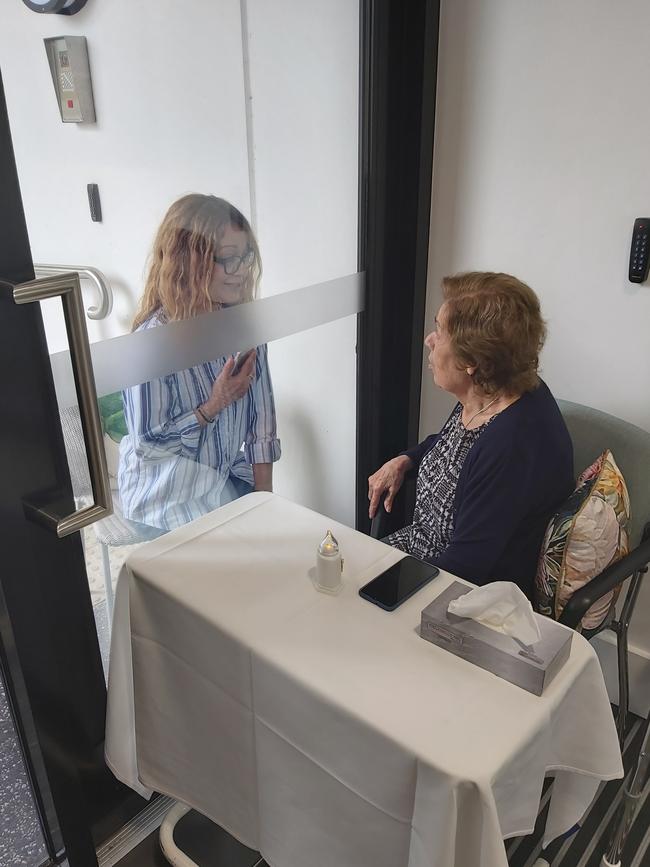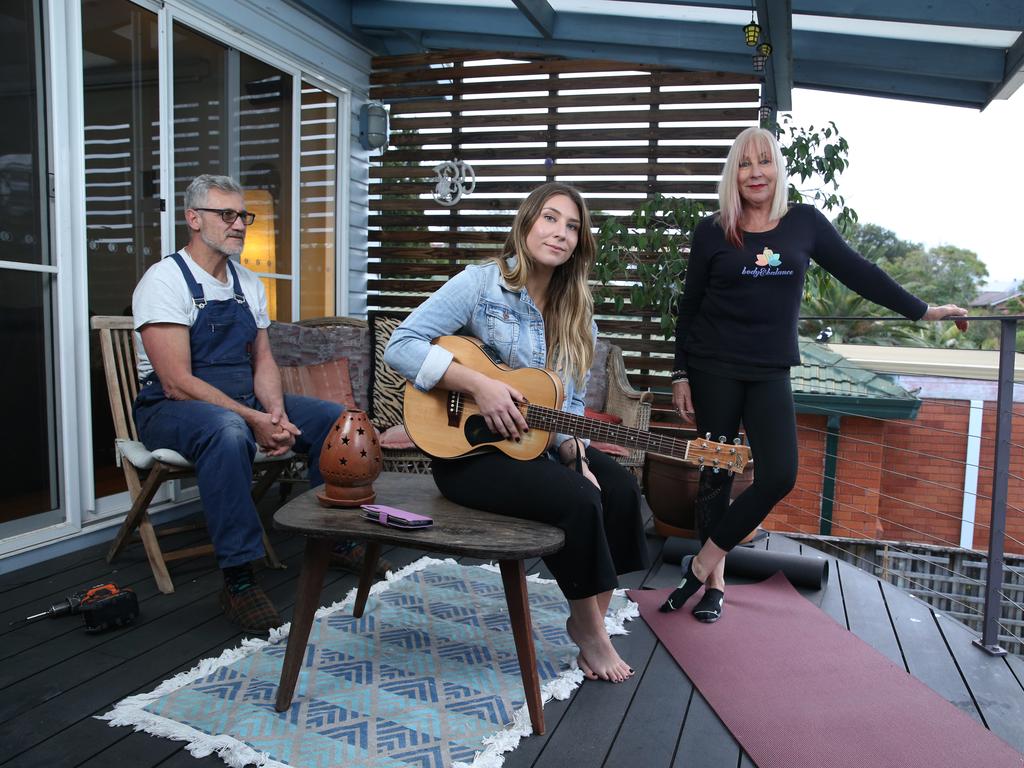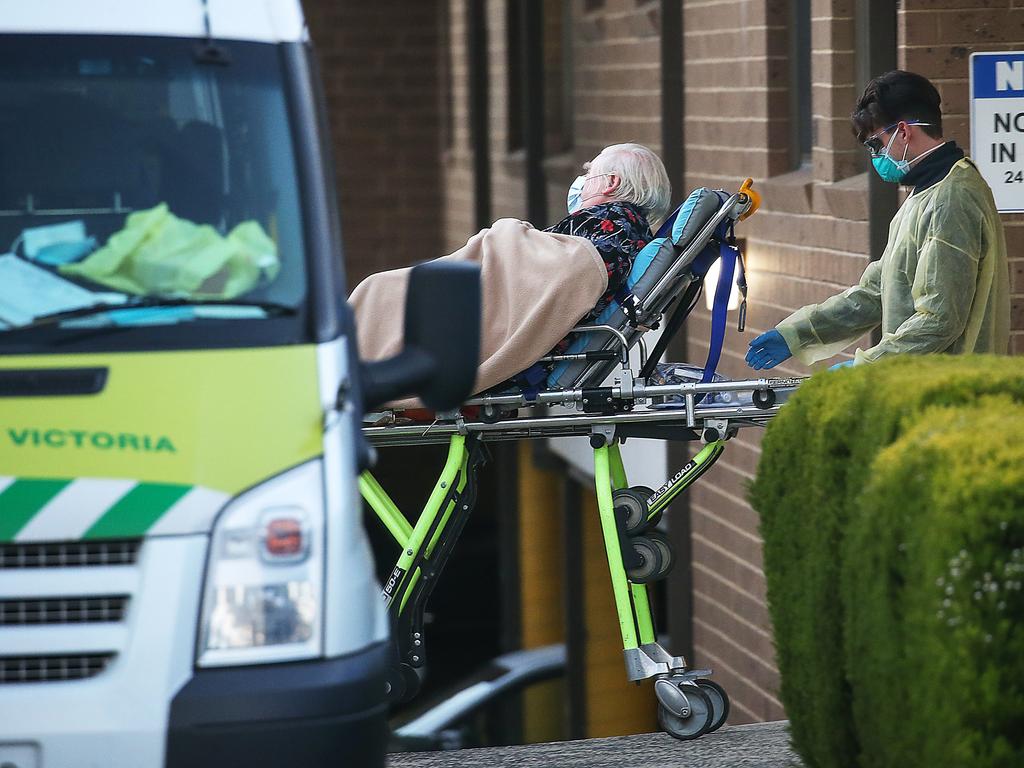Pandemic is a chance to reimagine aged care — everywhere
As the global pandemic rips through care home corridors, Western nations are waking up to the urgent need to transform residential aged care.

“It smelled like death,” says Stephanie (not her real name) of her first day at Camilla Care Community, a nursing home in Mississauga, a city in Canada. She and other care workers were sent to help out at the 236-bed facility in April as COVID-19 ripped through its narrow corridors and crowded wards.
Dozens of staff fell ill or refused to work. By mid-July nearly one-third of the residents had died. Outside, on a patch of grass, 69 small white crosses commemorate them. Across the rich world nearly half of all deaths from COVID-19 have happened in care and nursing homes, even though less than 1 per cent of people live in them. In Canada 80 per cent of all deaths from COVID-19 have happened in places such as Camilla.
In Britain the pathogen has killed an estimated 5 per cent of all people living in such institutions. The problem is not only that the residents’ age makes them particularly vulnerable, but also that their living arrangements created opportunities for the virus to spread. Countries with fewer care homes have had fewer COVID-19 deaths, all else being equal. The number of care-home beds explains 28 per cent of the variation in death rates among European countries and 16 per cent among American states, according to a study by Neil Gandal and colleagues at Tel Aviv University.
Politicians are under pressure to put more cash into care-home safety, inspections and quality standards. In the short term, care homes will need more personal protective equipment and better access to testing.
But the disaster also offers a chance to reimagine care. In the future, many experts argue, the vast majority of old people should be looked after at home for as long as possible. In all but the most severe cases this is cheaper. It is also what most old people want. Putting them in big institutions is the opposite of what they say they value most: autonomy and independence. And for those who still need it, residential care should be transformed.
Debilitating cost
Most people will need care as they age. In some countries that will bankrupt them. Some 70 per cent of Americans who reach the age of 65 will eventually need help doing at least two basic daily activities, such as washing or dressing; 48 per cent will receive paid care; 16 per cent will get dementia. The risks are higher for women. For one in 10 people who reach the age of 65 in Britain, the cost of care in their remaining years will exceed £100,000 ($180,000), according to a review conducted in 2011.
Demand is only growing. In rich countries the share of the population over 80 will double by 2050, by which time there will be only two people of working age for every person over 65. Although people’s lives are getting longer, the number of years during which they enjoy good health is not rising as swiftly.
In countries such as Norway and Sweden, care for the elderly is pretty good but costs taxpayers so much that it may not be sustainable as their populations age. In others, such as Britain and America, taxpayer-financed care is intended as a last resort for the poorest and sickest. This usually means a bed in a care home. These institutions have typically received most of the funding that governments set aside for looking after the elderly.

“Let’s be honest,” says David Grabowski, of Harvard Medical School. Even before the pandemic “nobody ever wanted to go to a nursing home. This was a crisis on top of a longstanding crisis”.
The sector is understaffed. In several countries it is unhelpfully detached from the health system. Care homes were “at the back of the queue during COVID, when it came to things like testing”, says Jos Schols at the University of Maastricht. In places such as Hong Kong and Taiwan that experienced the SARS outbreak of 2002-03 care homes had stockpiles of PPE. In other places they were very poorly supplied.
People working in British care homes say the pandemic has confirmed their “Cinderella status”. They were about twice as likely to die of COVID-19 as workers in hospitals. “Everyone is furious about what happened but too knackered to do anything about it,” says one carer.
All around the world staff at care homes turn over quickly. That is not surprising given that carers are paid on average 35 per cent less than people who do similar jobs in hospitals, according to the OECD, a club of mostly rich countries. Receiving care from a rotating cast of strangers is bad for everyone, but it is a particular problem for people with dementia. They make up the majority of care-home residents but mostly do not live in institutions that specialise in their condition. At the height of the outbreak in London more than one-quarter of staff in care homes for the elderly could not work, or would not. Officials sent in temporary workers to replace them. That probably spread the virus even further.
Tech can help
The urge to move someone to a care home often starts with concerns for their safety.
Care-givers begin to spot unexplained bumps and bruises. Questions about cigarette burns on the duvet are waved away. Pills are not taken. The milk is always off.
Now imagine a home where sensors keep an eye on all of those things. They spot a change in gait, appetite or activity early enough to predict a fall, dehydration or depression. A smart pill dispenser helps with medication. A companion robot provides reassurance, information, brain training and company. Some of the most compelling recent scientific and technological developments aim to help people with dementia.
A product produced by Elovee, an American start-up, allows them to have simple conversations with a digital avatar styled to look and sound like one of their relatives. The idea is to provide reassurance during moments of anxiety or boredom that occur when their loved ones are not around.
Technology “will never replace the loving attention of a carer,” says Wilco Achterberg of the University of Leiden. But data-crunching could make it easier to work out how to deploy carers more efficiently. Video calling is making it easier for relatives, paid carers and doctors to check in more frequently. Joan Gallimore, a 91-year-old who lives alone in England, says calling her family using a tablet her home-carers gave her when lockdowns began has been a revelation. She has enjoyed chats with her granddaughters and performances put on by her son-in-law, who is learning to play a ukulele.
Daycare for the elderly
Improving conventional ways of providing care at home is essential, too. Buurtzorg, a nursing provider in The Netherlands, champions a model that has been tried out in 25 countries. Its secret is simple, says founder Jos de Blok: let nurses do their jobs. Small teams of them are given considerable autonomy to care for a neighbourhood. Because all staff are qualified nurses, their salaries are higher than traditional carers. But because they are better trained they can get as much done despite spending a third less time with each patient.
For some people, particularly the very lonely and those with dementia, home visits are not enough. Daycare centres can help them. Some of those in Switzerland pick people up from their homes, help them get dressed and return them at the end of the day. In Sweden daycare for the elderly is offered by the state, in much the same way as childcare is. Daycare services can improve older people’s mental and physical health. They also provide advice and respite for their families. In rich countries more than one in eight people aged over 50 provide care to another person at least once a week. Keeping them from burning out is key to helping people age at home.
More support for these carers also helps reduce the risk that their own health will decline, and makes it less likely they will drop out of the workforce. In America 48 per cent of people who provide help to older adults care for someone with dementia (a quarter have at least one child under 18 to look after as well). Of those who previously had jobs, 18 per cent moved from full- to part-time work when called upon to help. Some 16 per cent took a leave of absence and 9 per cent quit altogether.
Some old people will have to move out of unsuitable homes. But most need not move to an institution, even then.
Denmark is a leader in providing alternatives. Its government spends more on non-residential care than the residential sort. Options for ageing Danes include retirement communities and flats built close to but not in care homes.
Authorities in some other places are trying to make it easier for families to build annexes that old relatives can move into.
Students and some other youngsters in The Netherlands are encouraged to share courtyards or buildings with elderly people who are not part of their family, sometimes in exchange for cheaper rent. The idea is that they will provide them with companionship and occasional help.
Smaller is better
In Canada some 40 per cent of residents could go home if given the right support, according to recent research. A study in 2014 in Alabama found people with similar needs fared about as well in their own houses as those who stayed in care homes. But the group receiving care at home saved $4500 a year in costs. “Decanting nursing homes” is a growing opportunity, says Zayna Khayat of SE Health, a Canadian care provider. There will always be people who want or need residential care. In those cases “smaller is often better”, says Dr Grabowski.
Research shows that smaller nursing homes use fewer restraints, see fewer infections and have more satisfied residents than larger ones. Small institutions promote closer friendships between residents and closer connections with staff.
In Tupelo, Mississippi, residents of the Green House wake up to the smell of bacon, cinnamon and fresh coffee. The constant smell of baked goods in the open kitchen is deliberate; declining appetite can be a problem in old age. “I’ve seen people come from traditional nursing homes and they start eating again, they start walking again and they start talking again,” says Steve McAlilly, one of the founders.
The Green House consists of 10 homes, each with 10-12 housemates. There are no vinyl floors, no dinners on trays and no bingo. “Do you have planned activities in your home?” asks Mr McAlilly. “If it isn’t in a home it isn’t in a Green House.” Bill Thomas, an American geriatrician who founded the Green House movement in 2003, calls himself a “nursing home abolitionist” and says he is guided by two principles: “It is better to live in a house than a warehouse” and “People should be the boss of their own lives”. Care homes that follow the Green House model now exist in more than 30 American states.
Australia’s crisis
The proportion of elderly Australians living in institutions — 45 per cent — is among the highest of OECD countries. The pandemic is throwing the state of care in these facilities, already the subject of a royal commission established in October 2018, into sharp relief. In its interim report last November the commission found aged care was in a shocking state of neglect that “diminishes Australia as a ¬nation”.

On Saturday, as Daniel Andrews reported 536 active cases in 38 aged-care locations, federal Health Minister Greg Hunt announced the Victorian Aged Care Response Centre — a partnership between the federal government and the state to address the crisis.
Seven of the 10 dead announced on Sunday were in aged-care settings, higher than the usual “case fatality rate” of 35-40 per cent.
The pandemic has delayed for three months the release of the final report of the Royal Commission into Aged Care Quality and Safety until 2021, with the report to be handed down on February 26.
Reasons for hope
Improving care will not be cheap. But settling for bad care only stores up costs for later.
Each month the health system in Britain loses about 83,000 hospital days to “bed-blocking” that results when elderly patients who are no longer sick enough to remain in hospital get stuck there because no good care is available outside it.
Governments could make more use of personal-care budgets. These are pots of money allocated to someone who needs support. Recipients are entitled to decide for themselves how the cash should be spent. That encourages care providers to dream up ever more personalised services and to keep down costs.
Training, recruiting and trying harder to retain carers are also urgent priorities. The number of care workers in rich countries will need to increase by 60 per cent by 2040 just to maintain the present ratio of carers to elderly people, says the OECD. Investments in technology and more efficient use of skilled staff could at best meet half that gap.
Experts are hopeful. “I’ve been preaching this stuff for decades and nobody ever wanted to hear it. Then COVID hit and my phone hasn’t stopped ringing,” Washington DC-based ageing services expert Anne Tumlinson says.
The pandemic is persuading more people that “the mass institutionalisation of older people isn’t such a good idea”, says Mr Thomas of the Green House Project.
Social care has never enjoyed so much attention, agrees José Luis Fernández of the London School of Economics. But he worries that governments “will struggle to fund new commitments at a time when public finances are under huge pressure”.
There have been lots of broken promises in the past.
THE ECONOMIST, staff reporters





To join the conversation, please log in. Don't have an account? Register
Join the conversation, you are commenting as Logout